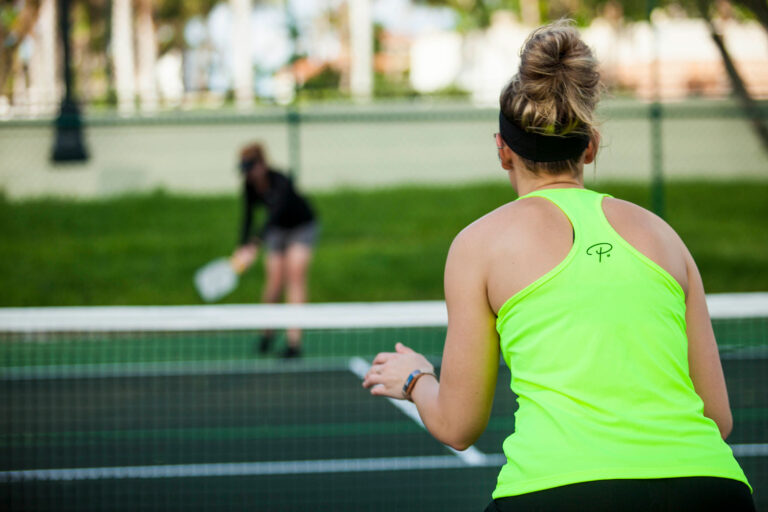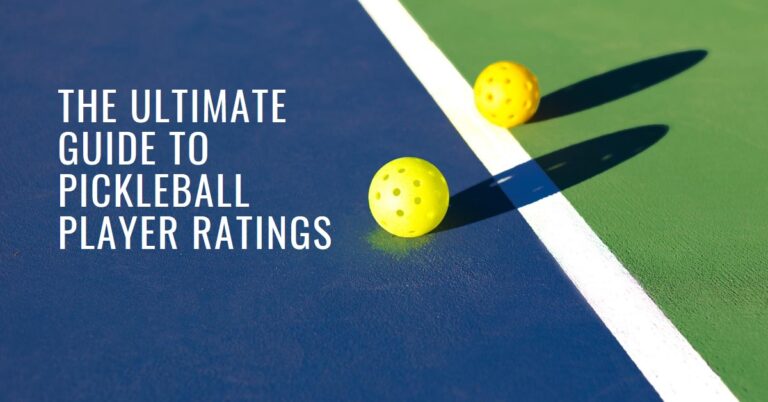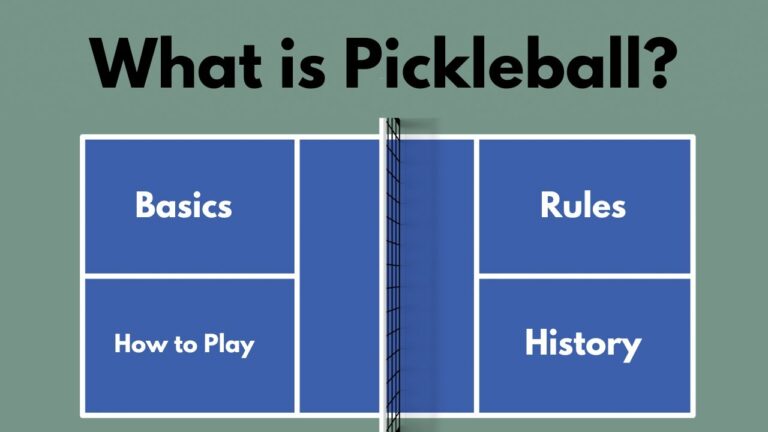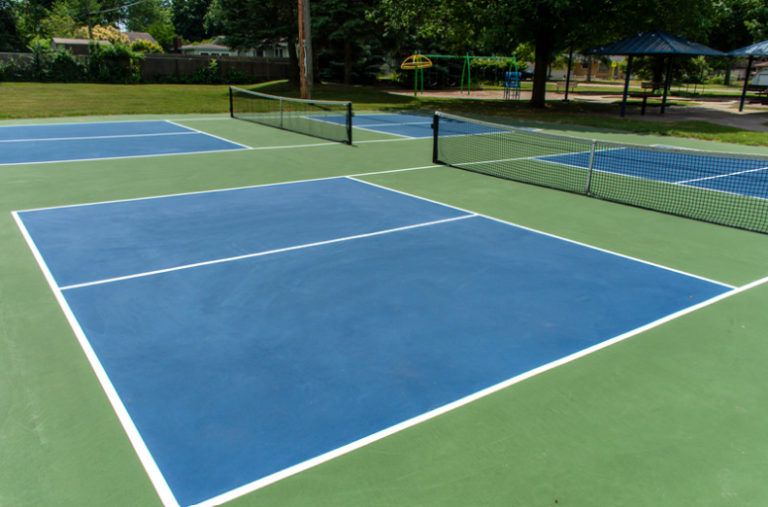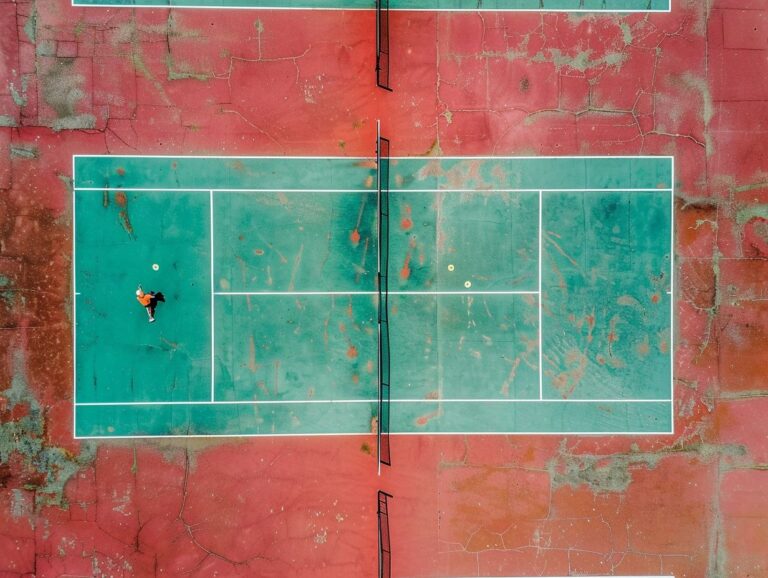How to Play Pickleball for Beginners: A Comprehensive Guide
Key Takeaway:
Pickleball is a fun, social, and easy-to-learn sport that offers a great low-impact workout for players of all ages and skill levels. With simple rules, basic equipment needs, and a supportive community, it’s the perfect activity for beginners to take up. This guide provides all the essential knowledge to start playing pickleball, from understanding the rules and scoring to developing fundamental shots and strategies.
How to Play Pickleball for Beginners: A Complete Guide
Have you heard about the latest craze sweeping across courts and communities? It’s called pickleball, and it’s an addictive paddle sport that’s perfect for players of all ages and skill levels. As a beginner, you might be feeling a little intimidated by the quirky name and unfamiliar rules. Don’t worry – this comprehensive guide will teach you how to play pickleball for beginners, from the basic rules to advanced strategies.
What is Pickleball?
Pickleball is a unique sport that combines elements of tennis, badminton, and ping-pong. It’s played on a smaller court with a perforated plastic ball and solid paddles. The court is divided by a low net, and the game can be played in singles or doubles format.
But pickleball isn’t just any ordinary sport – it’s a phenomenon that’s taking the world by storm. In fact, it’s one of the fastest-growing sports in America, with over 4.8 million players across the country. And it’s not hard to see why: pickleball is easy to learn, low-impact, and incredibly social.
Why Play Pickleball?
There are so many reasons why pickleball is becoming a global phenomenon. For starters, it’s incredibly easy to learn, making it accessible to beginners of all ages. You don’t need to be a former tennis pro or have lightning-fast reflexes to pick up the game. The rules are simple, and the smaller court size means you won’t be running marathons like you would in tennis.
But pickleball isn’t just a walk in the park – it’s also a surprisingly intense workout. Despite the slower pace, you’ll find yourself constantly moving, rotating, and pivoting to return shots. It’s a low-impact sport, which means it’s gentle on your joints – a blessing for those with mobility issues or recovering from injuries.
Perhaps the best part of pickleball, though, is its social aspect. The small court size and slower pace of play encourage friendly banter and camaraderie among players. It’s the perfect way to make new friends and stay active at the same time. In fact, many pickleball enthusiasts will tell you that the real draw of the sport is the tight-knit community that forms around it.
Just ask Kathy and Bob, a retired couple from Florida who fell in love with pickleball a few years ago. “It’s not just a game – it’s a lifestyle,” Kathy says with a smile. “We’ve made so many wonderful friends through pickleball, and it keeps us active and engaged. It’s the perfect way to spend our golden years.”
Getting Started with Pickleball
Now that you know what all the hype is about, you’re probably eager to learn how to play pickleball for beginners. Don’t worry – it’s easier than you might think!
The Basics of Playing
Let’s start with the essentials. In pickleball, the goal is to hit the ball over the net and into your opponent’s side of the court. Sounds simple enough, right? But there are a few key rules you need to know:
- Rule #1 – Singles vs. Doubles Play: Pickleball can be played in either singles (one player per side) or doubles (two players per side) format. The court dimensions are the same, but the strategy and positioning can vary quite a bit between the two styles of play.
- Rule #2 – Scoring: Only the serving side can score points in pickleball. If the receiving side wins the rally, they simply gain the right to serve next.
- Rule #3 – Determining the First Server: At the start of the game, the first server is typically determined by a coin flip or some other random method. Servers must serve diagonally across the court.
- Rule #4 – The Two-Bounce Rule: After the serve, the ball must bounce once on each side before players can start volleying back and forth. This is known as the “two-bounce rule” and helps prevent players from smashing the ball aggressively right off the serve.
- Rule #5 – Underhand Volley Serve: Speaking of serves, pickleball has a unique serving style. All serves must be hit underhand, with the paddle head below the server’s waist. This helps control the pace of the game and prevent powerful overhead serves.
- Rule #6 – Serving Rules: Servers must stand behind the baseline when serving, and the serve must land diagonally in the opposite service court. If the ball lands outside the service court or in the “kitchen” (more on that later), it’s considered a fault.
- Rule #7 – Boundary Rules: The ball is considered “in” as long as it lands within the court boundaries or touches any part of the line. If the ball lands outside the court or touches any permanent object outside the court (like a fence or bench), it’s considered “out.”
- Rule #8 – Game End Condition: A game of pickleball is typically played to 11 points, and you must win by two clear points. So if the score is tied at 10-10, play continues until one side takes a two-point lead.
Whew, that’s a lot of rules to remember! But don’t worry – once you start playing, they’ll become second nature. And remember, the beauty of pickleball is its simplicity. Even with all these rules, the game is still incredibly easy to pick up and enjoy.
Grips, Stances, and Shots
Now that you know the basic rules, it’s time to talk technique. Mastering the proper grips, stances, and shots will help you take your pickleball game to the next level.
Let’s start with the grip. There are a few different ways to hold the paddle, but the most common is the “continental grip.” With this grip, your index finger runs down the top of the paddle’s face, and your other fingers wrap around the handle. This grip allows for maximum control and versatility when hitting different shots.
Next up: stance. In pickleball, you’ll want to keep your knees bent and your weight evenly distributed on the balls of your feet. This “ready position” will help you move quickly and respond to shots with ease.
As for shots, there are a few key ones to master:
- The Serve: As mentioned earlier, all serves in pickleball must be hit underhand, with the paddle head below your waist. You can opt for a simple drop serve or add a bit of spin for extra control.
- The Forehand Drive: This is your basic forehand shot, hit with a smooth, flat stroke across your body. It’s a great shot for getting the ball back into play and putting pressure on your opponents.
- The Backhand Drive: Similar to the forehand, but hit with the paddle face leading your swing path. Don’t twist your body too much – let your shoulders and arm do the work.
- The Dink Shot: A classic pickleball shot, the dink is a soft, high-arcing shot that lands just over the net and into the “kitchen” (the non-volley zone near the net). It’s a great way to reset the rally and keep your opponents on their toes.
- The Volley: Once the two-bounce rule has been satisfied, you can start volleying the ball back and forth before it bounces. Volleys are hit out of the air, often near the net, and require quick reflexes and precision.
Mastering these basic shots will give you a solid foundation for playing pickleball. But don’t be afraid to experiment and develop your own unique style as you gain more experience.
Strategy and Positioning
Pickleball isn’t just about hitting the ball back and forth – it’s a game of strategy and positioning. Here are a few tips to help you outmaneuver your opponents:
- Court Positioning: In doubles play, it’s crucial to maintain proper court positioning. The serving team should have one player at the baseline (the “server”) and one player near the net (the “net player”). The receiving team should mirror this positioning, with one player near the baseline and one at the net.
- Offensive and Defensive Strategy: When you have the advantage (say, your opponent is out of position), look for opportunities to be aggressive and put the ball away with a well-placed drive or volley. But when you’re on the defensive, focus on getting the ball back into play and resetting the rally.
- Doubles Communication: In doubles play, communication with your partner is key. Call out shots (“mine” or “yours”), coordinate your positioning, and always be aware of where your partner is on the court.
Rules and Regulations
While the basic rules of pickleball are fairly straightforward, there are a few other regulations and concepts you should be aware of as a beginner:
- Faults: A fault is committed when a rule is violated, such as hitting the ball out of bounds, failing to clear the non-volley zone (more on that next), or touching the ball with your body. Faults result in a loss of serve or point, depending on which side committed the fault.
- Non-Volley Zone (NVZ): Also known as “the kitchen,” this is a rectangular area on either side of the net where you cannot volley the ball. Players must allow the ball to bounce before hitting it when inside this zone. The NVZ helps control the pace and prevents relentless smashing at the net.
- Line Calls: Since there are no official line judges in recreational pickleball, players must respect the honor system and make their own line calls. If a ball lands close to a line, the call should always go to the opponent. It’s just good picklesmanship.
- Etiquette and Safety: Like any sport, pickleball has its own set of etiquette guidelines. Always call out “ball” or “bounce” to alert other players. Don’t cross over or walk behind other courts while games are in progress. And for safety, never insert body parts under the net!
Required Equipment
One of the beauties of pickleball is that you don’t need much fancy equipment to play. Here’s the basic gear you’ll need as a beginner:
- Pickleball Paddle: Look for a basic composite or wood paddle in the lightweight/mid-weight range (around 6-8 ounces). Avoid super heavy paddles until you build up more strength.
- Pickleball Balls: Outdoor balls tend to be slightly more durable than indoor balls, but either will work fine when you’re starting out. They have holes to control the flight path.
- Comfortable Clothing and Court Shoes: Wear breathable athletic clothing and shoes with good traction to avoid slipping on the court.
As for finding a court, your local parks and recreation centers are your best bet. Many now have dedicated outdoor or indoor pickleball courts due to the sport’s rising popularity. You can also look into any pickleball clubs or meetup groups in your area.
Tips for Beginners
Ready to start hitting the courts? Here are some final tips to help beginners get their pickleball game off on the right foot:
- Stretch and Warmup: Don’t underestimate how much movement is involved in pickleball. Spend 5-10 minutes doing some light cardio and dynamic stretches to avoid injuries.
- Keep Your Focus: Pickleball requires quick reactions and spatial awareness. Stay present and focused at all times while playing.
- Maintain Your Breathing: Proper breathing will help you stay relaxed and avoid getting winded during long dink rallies. Exhale on your shots.
- Stay on the Balls of Your Feet: Keeping your weight balanced on the front of your feet will allow you to react and change directions quickly.
- Aim for Long Rallies: Don’t go for outright winners too often when starting out. Focus on consistent, controlled shots to extend rallies and build your court endurance.
- Keep It Simple: As a beginner, don’t try to add too much spin or fancy shots to your game right away. Stick to the basic strokes until you have them down pat.
- Learn from Your Mistakes: We all miss shots or make silly errors sometimes. Stay positive and use those moments as learning opportunities.
- Most Importantly, Have Fun!: Pickleball is meant to be an enjoyable social activity. Don’t take yourself too seriously and remember to laugh off any blunders.
The more you play and immerse yourself in the pickleball world, the more tips and tricks you’ll pick up. Just take it one dink shot at a time!
Getting Involved in the Pickleball Community
As you’re learning how to play pickleball for beginners, you’ll quickly find that it’s about much more than just hitting a ball back and forth. Pickleball has an incredibly vibrant and welcoming community surrounding it.
Once you get the basics down, consider joining a local pickleball club or group. These are great ways to find regular playing partners, enter tournaments and leagues, improve through group clinics and drills, and most importantly, make new friends!
Many areas even have Facebook groups or apps dedicated to connecting local pickleball players. This makes it easy to get game notifications, plan meetups, and swap strategy tips.
You can also get involved at the national level through organizations like the USA Pickleball Association and the Professional Pickleball Registry (PPR). These provide pathways to obtain official player ratings, enter sanctioned tournaments, and stay up-to-date on the latest rules and developments in the sport.
The bottom line is, pickleball is a true community experience at its core. The sooner you get plugged into the network of players in your area, the better your overall journey with the sport will be!
Final Thoughts
Well, there you have it – a comprehensive guide on how to play pickleball for beginners. You’ve learned the basic rules, grips, strokes, strategies, and everything else you need to get started.
But really, this article has only just scratched the surface. Pickleball is a deceptively deep game with countless nuances to explore as you progress. From developing a killer spin serve to mastering the elusive “ernados” shot, there’s always something new to learn.
That’s what makes pickleball so special though – the journey never ends. It’s a game that will keep you engaged, active, and socially connected for years to come.
As former pro pickleball player Kyle Yates puts it, “Pickleball is one of the very few sports where raw beginners can play competitively with experienced players and both sides have a great time…that’s the beauty of it.”
So get out there, grab a paddle, and prepare to get pickled! Whether you’re a spry retiree looking for a fun activity or a young athletic newcomer to the sport, pickleball has something to offer everyone.
Just remember – keep your eye on the ball, stay light on your feet, and don’t take yourself too seriously out there. After all, it’s only pickleball!

